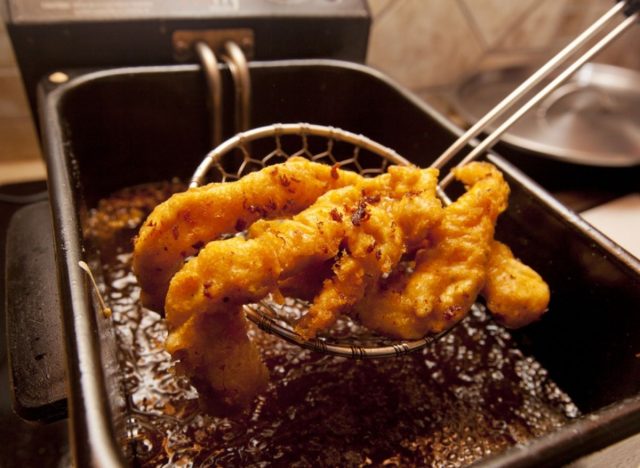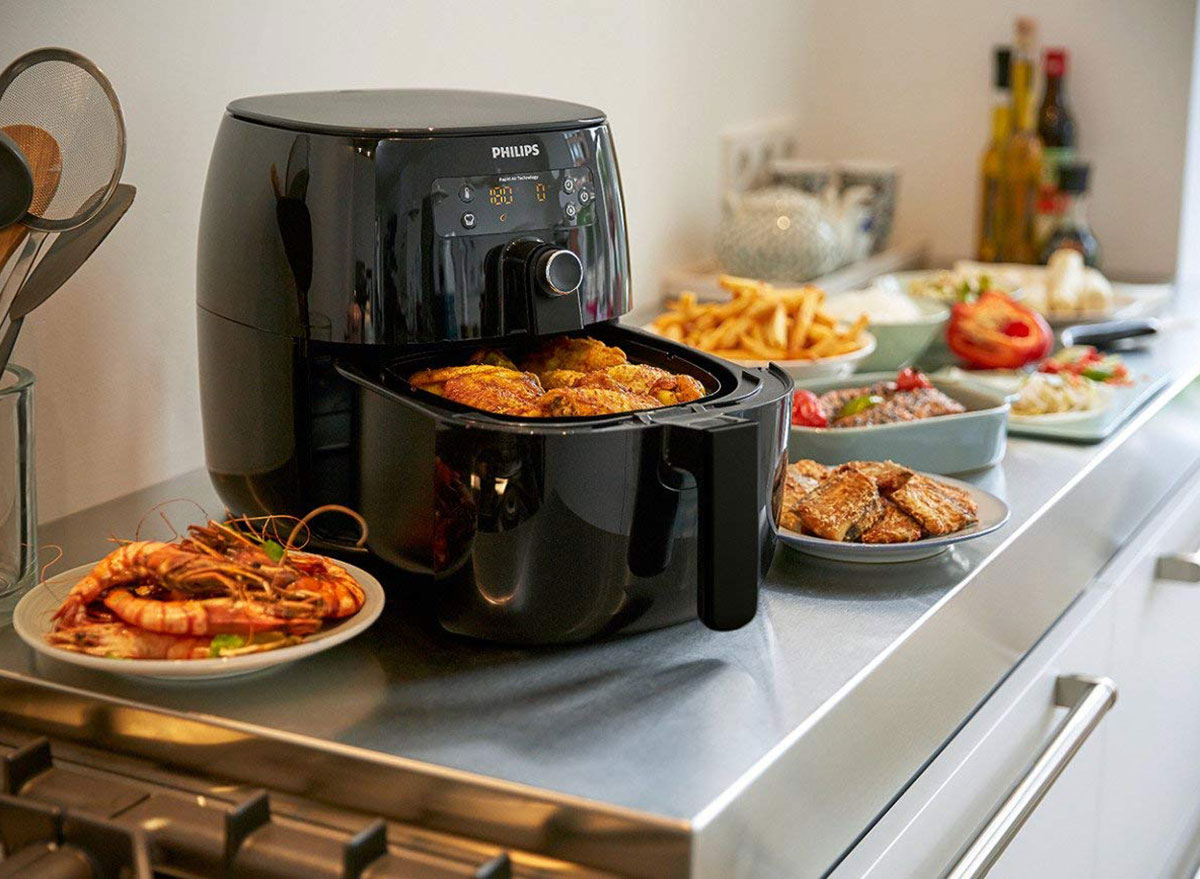Air fryers have become the must-have piece of equipment for your kitchen. Because air fryers can cost a pretty penny, you may find them on newlywed registries and Christmas wish lists. Plus, they take up a decent amount of counter space. However, it seems that a lot of folks just can't live without them.
Perhaps this is because air fryers are touted for whipping up healthier dishes, especially compared to deep frying. But what exactly goes on in that air fryer to make it healthier to use? Here's a look at how an air fryer works, and why this approach to frying is healthier compared to deep frying.
How an air fryer works

"An air fryer is very similar to a mini convection oven, but the smaller-sized cooking space means more power. This appliance uses a fan to circulate hot air around food," Dana Angelo White, MS, RD, ATC, owner of Dana White Nutrition, Inc ., and author of Healthy Air Fryer Cookbook and Healthy Vegan Air Fryer Cookbook explains. "It is much faster than a conventional oven and allows for food to cook quickly and evenly. This hot air helps food get crispy with little or no oil."
When it comes to using the air fryer, all you need is a small amount of oil to keep your falafel balls, fried chicken, and French fries crunchy. Each tablespoon of oil provides around 120 calories and 14 grams of fat. So when you're using two teaspoons of oil to make your fries in the air fryer—which is only about 80 calories—that is much less oil than you would use when you deep fry your fries.
"The total calorie savings varies by food and serving size, of course," White says. "But if you can cut back on 120 calories and 14 grams of fat per tablespoon of oil, you can see how the savings pile up quickly."
But the air fryer isn't just for making French fries and fried chicken. You can use your air fryer to make vegetable dishes and desserts, too.
"Veggie egg rolls, taquitos, and even just air-fried broccoli cook up in minutes and are so delish," White exclaims. "Scones, donuts, and banana splits are also family favorites."
"There is definitely a flavor and texture difference," White says with regard to the taste of air fryer-prepared foods. "[However, you] still get the wonderful salty crunch of a fry and the crispy skin of fried chicken, but you can taste the ingredients better without all that extra grease."
Why deep frying is so unhealthy

When you deep fry food, you're submerging the food in a tub of oil. This dry-heat cooking method uses fat—or in this case, oil—to cook the food. A high-temperature cooking process, frying tends to cook the food once the temperature reaches about 400 degrees in order to create a crunchy texture and golden-brown color on the food's exterior.
The calorie in fried foods depends on the amount of oil that is absorbed by the food item while it's submerged. As I mentioned before, one tablespoon of oil is 120 calories and 14 grams of fat—so the more oil that gets absorbed, the higher the calorie and fat count will be for the food.
In addition to getting more calories and total fat, eating too much fried food has been associated with a higher risk of heart disease. A 2015 study published in the Journal of the American Heart Association looked at the frequency of fried food intake and the risk of heart failure in male physicians. The study concluded that when more fried food was eaten, there was a higher risk of heart failure in male physicians.
Furthermore, frying at high temperatures can increase the trans fat content. According to the American Heart Association, "Trans fats raise your bad (LDL) cholesterol levels and lower your good (HDL) cholesterol levels." Eating trans fats can also increase your risk of developing heart disease, stroke, and Type 2 diabetes.
The bottom line
Air frying your food is certainly a healthier cooking method compared to deep frying. However, if you're still unsure if you should invest in an air fryer, test out a friend or family member's unit before purchasing. If you like it, you can always put it on your next holiday wish list.










